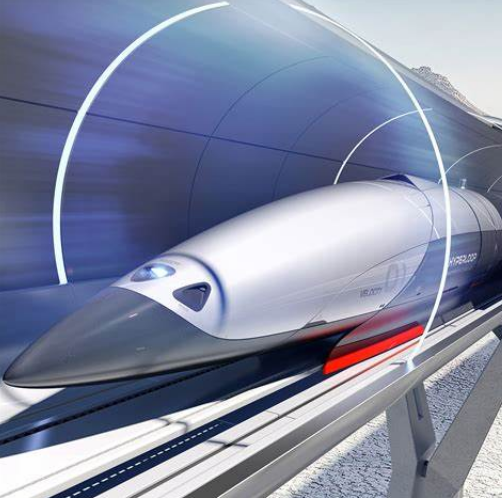Have you ever longed to go around the world but lacked the time to bear the long journey? Consider travelling the longitudinal length of India in only three hours. Introducing the “Hyperloop”, information that could potentially transport you anywhere in the albeit these of quality at the lowest possible cost.
While we still live in an era where technology is advancing at breakneck speed, we tend to haven’t stirred much afar from the transport systems that were there since the past decades. But the fantasy of fictitious transportation is incredibly much alive immediately and has been meritoriously introduced by a thought referred to as “Hyperloop”.
Hyperloop addresses the best jump in transport foundation. Accommodating travelers in cases that move at an aircraft speed through emptied tubes utilizing electric impetus and attractive levitation (maglev). Looking back at a traditional train running on constructed tracks, it works against two elements, namely ground friction and air resistance or drag, clearly costing speed and energy. Therefore, for achieving greater speeds on the surface of the earth, you would perpetually need to eliminate these resistances. To stamp out the ground friction like in ordinary trains, the principle of magnets being the most energy-efficient and ecologically sound is instigated. This fabrication was a revolution in the transportation industry. Like poles repel one another, whereas unlike poles attract one another, according to the most basic law of magnetism. As a result, when this notion is applied to railway lines using poles or magnets, the train cases float over. However, owing to repulsion, this does not ensure the train’s stability on the track and may cause the compartments to flip. To keep the train steady, a claw-like mechanism is employed. This is a basic concept used in magnetic levitation trains to achieve ground friction removal in the first run. The second issue to consider is air resistance, which lowers the speed. We can suck out nearly 90% of the air in the tube by constructing a tube around the train from the beginning to the end of the destination and leveraging vacuum pumps every 7-10 kilometers. This substantially reduces air drag and pressure. The pressure is about the same as what exists at a height of 150000 feet above sea level. The train within the tube, of course, maintains regular air pressure for human comfort.
What direction do you think the train will go now? Considering traditional trains could only move to owe to contact between the train and the track in the possible directions, that is ahead and backwards using friction acting between them as the knowledge. Because there is no interaction between the track and the train in Hyperloop, electromagnetism is perhaps the most promising approach to achieve this. Thus, creating magnetic phenomena with electricity that can induce push and pull.
Another concern that may arise in our minds is how we would stop the train once we arrive at our location. The most common strategy recommended by researchers is to move the magnets away from or around the rails, creating electric currents inside the tracks that produce a magnetic effect that resists the train’s velocity. Another braking technique uses enormous fans to use the 10% of air nonetheless available inside the tube to push the train backwards or slow the train’s motion.
That’s the Hyperloop concept, which was proposed by Elon Musk, who imagined a train that could move at supersonic speeds within a circle.



